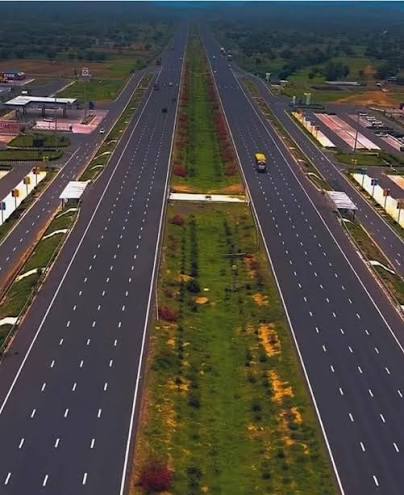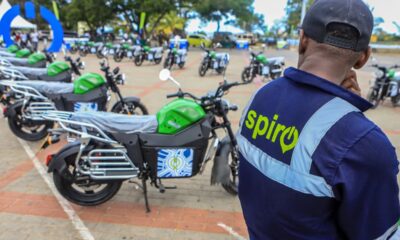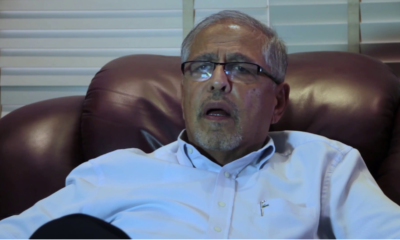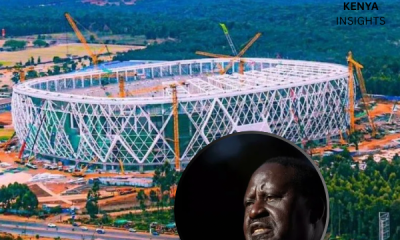Business
Planned Rironi–Mau Summit Expressway to Offer Two-Tier System — Sh8 Per Km for the Wealthy, Free Route for All Others
The Sh8 rate applies to small passenger cars and SUVs, while heavy trucks will pay higher tariffs under a separate scale.

Kenya’s long-delayed Rironi–Mau Summit expressway is finally taking shape — and with it, a bold experiment in road financing that will divide motorists into two distinct lanes: those who can pay Sh8 per kilometre for a premium, high-speed experience, and those who will stick to the old road for free.
The Kenya National Highways Authority (KeNHA) has confirmed that the China Road and Bridge Corporation (CRBC) and the National Social Security Fund (NSSF) consortium has been selected as the preferred bidder for the 175-kilometre Nairobi–Nakuru–Mau Summit (A8) expressway.
The Sh180 billion project, expected to break ground in 2026 and open by 2028, will operate under a 30-year concession, meaning the investors will build, operate, and maintain the highway before handing it back to the government.
Under the plan, motorists who opt for the expressway will pay Sh8 per kilometre a rate that will rise by one per cent each year while the existing A8 road will remain toll-free.
The design ensures that every motorist, regardless of income, retains the right to travel between Nairobi and western Kenya without charge.
“Critical to the project’s approval is the preservation of existing road networks as toll-free alternatives,” KeNHA stated, noting that the dual-option approach aims to guarantee freedom of choice for road users.
The expressway’s proponents argue that it will transform one of Kenya’s most congested and economically vital transport corridors, cutting travel time from Nairobi to Nakuru from hours to under two.
For paying motorists, the road will offer a seamless, high-speed journey with improved safety features, fog-zone protections, better drainage, lighting, and a 4.5-kilometre elevated viaduct through Nakuru town to eliminate bottlenecks.
The Sh8 rate applies to small passenger cars and SUVs, while heavy trucks will pay higher tariffs under a separate scale.
The toll system will use an “open tolling” model, with eight collection stations including two along the Maai Mahiu stretch allowing motorists to pay only for the sections they use.
In parallel, the government will upgrade the Nairobi–Maai Mahiu–Naivasha (A8 South) route to a dual carriageway, ensuring it remains a toll-free alternative for those unwilling or unable to pay.
Officials say this combination of premium and free options mirrors the Nairobi Expressway model, which has similarly retained alternative public roads for non-paying motorists.
Economists have described the arrangement as a pragmatic balance between infrastructure financing and social equity.
“The toll system gives wealthier motorists and commercial operators faster, more reliable travel while maintaining a free route for everyone,” said one transport policy analyst. “It’s a two-speed Kenya — but one that preserves access for all.”
The consortium’s proposal edged out rival bids that sought higher tolls up to Sh10 per kilometre with faster annual increases.
The CRBC–NSSF offer also places all traffic and revenue risks on the private investors, meaning taxpayers won’t foot the bill if traffic volumes fall short of projections.
Still, questions remain over the maintenance of the existing free route, which many fear could deteriorate or become chronically congested once the expressway draws off wealthier motorists.
“Free alternatives must be truly usable,” warned a civil society transport watchdog. “Otherwise, this risks creating a class divide on our roads.”
Before construction begins, the consortium must conduct detailed environmental and social impact assessments, outline compensation for land acquisition, and agree with the government on matters of taxation, toll collection, and enforcement.
The PPP Committee approved the project on October 9, but final negotiations are still underway.
Beyond easing traffic, the expressway is expected to create thousands of local jobs and support small businesses along its route during and after construction.
KeNHA says part of the project’s core objectives include training and upskilling local workers, boosting regional trade, and enhancing road safety.
For now, the Rironi–Mau Summit expressway stands as a symbol of Kenya’s evolving road policy — one that mixes ambition with accessibility, wealth with equity, and modern efficiency with old-fashioned freedom of the road.
Kenya Insights allows guest blogging, if you want to be published on Kenya’s most authoritative and accurate blog, have an expose, news TIPS, story angles, human interest stories, drop us an email on [email protected] or via Telegram
-

 Business1 week ago
Business1 week ago‘They’re Criminals,’ Popular Radio Presenter Rapcha The Sayantist Accuses Electric Bike Firm Spiro of Fraudulent Practices
-

 News2 weeks ago
News2 weeks agoTemporary Reprieve As Mohamed Jaffer Wins Mombasa Land Compensation Despite Losing LPG Monopoly and Bitter Fallout With Johos
-

 Business5 days ago
Business5 days agoIt’s a Carbon Trading Firm: What Kenyans Need to Know About Spiro’s Business Model Amid Damning Allegations of Predatory Lending
-

 Business4 days ago
Business4 days agoManager Flees Safaricom-Linked Sacco As Fears Of Investors Losing Savings Becomes Imminent
-

 Investigations2 weeks ago
Investigations2 weeks agoFrom Daily Bribes to Billions Frozen: The Jambopay Empire Crumbles as CEO Danson Muchemi’s Scandal-Plagued Past Catches Up
-

 Sports1 week ago
Sports1 week ago1Win Games 2025: Ultimate Overview of Popular Casino, Sports & Live Games
-

 Investigations1 week ago
Investigations1 week agoDisgraced Kuscco Boss Arnold Munene Moves To Gag Media After Expose Linking Him To Alleged Sh1.7 Billion Fraud
-

 Business2 weeks ago
Business2 weeks agoHass Petroleum Empire Faces Collapse as Court Greenlights KSh 1.2 Billion Property Auction












